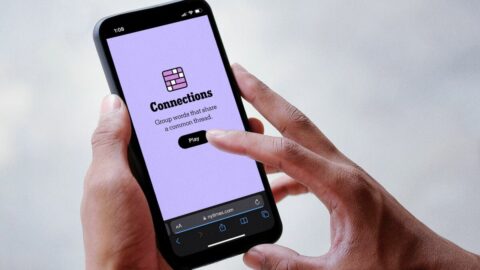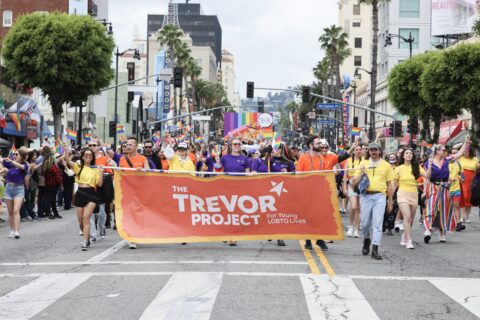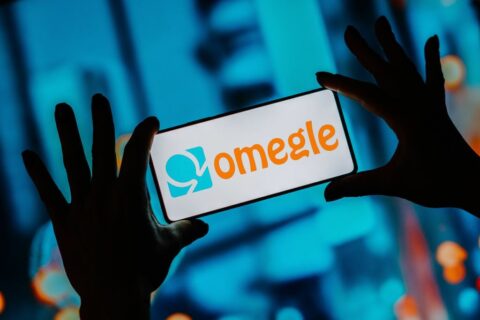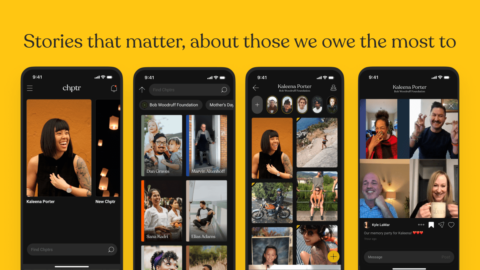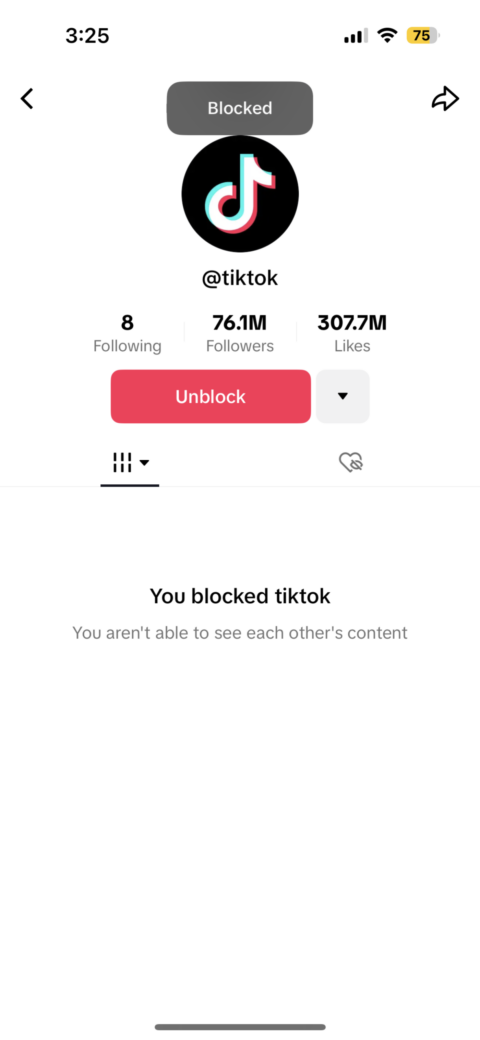Peter Chen Contributor Peter Chen is CEO and co-founder of Covariant, the world’s leading AI robotics company. Before founding Covariant, Peter was a research scientist at OpenAI and […]
How to watch ‘The Curse’: Release date, streaming deals, and more
Here are the best streaming deals to watch ‘The Curse’ on Showtime, starring Emma Stone, Nathan Fielder, and Benny Safdie.
NYT ‘Connections’ hints and answers for November 10: Tips to solve ‘Connections’ #152.
Connections is a New York Times word game that’s all about finding the “common threads between words.” How to solve the puzzle.
The watermelon emoji isn’t just TikTok speak for Palestine
On Instagram, infographics about the humanitarian crisis in Gaza are punctuated with the watermelon emoji. In captions of TikTok videos calling for a ceasefire, the emoji replaces words […]
Meta and Amazon team up on new in-app shopping feature on Facebook & Instagram
Meta may have abandoned its efforts around live shopping on Facebook and Instagram, but the social networking company still believes in its apps’ potential as a shopping platform. […]
The Trevor Project leaves X as anti-LGBTQ hate escalates
On the one year mark before the next presidential election, LGBTQ organization the Trevor Project announces its leaving X/ Twitter amid escalating hate and online vitriol.

With the 2024 presidential election is just a year away, advocates are doing everything they can do bring attention to the country’s most pressing social justice issues. Today, national LGBTQ youth organization the Trevor Project announced it is leaving X (formerly Twitter) amid growing anti-LGBTQ sentiment, both online and off.
“LGBTQ young people — and in particular, trans and nonbinary young people — have been unfairly targeted in recent years, and that can negatively impact their mental health. In 2023, hundreds of anti-LGBTQ bills have been introduced in states across the country, which can send the message that LGBTQ people are not deserving of love or respect. We have seen this rhetoric transcend politics and appear on social media platforms,” the Trevor Project said in a statement.
Mark Zuckerberg vetoed attempts to address teen mental health on Meta platforms, new lawsuit alleges
On Nov. 9, the organization posted the following message on its page:
The Trevor Project has made the decision to close its account on X given the increasing hate & vitriol on the platform targeting the LGBTQ community — the group we exist to serve. LGBTQ young people are regularly victimized at the expense of their mental health, and X’s removal of certain moderation functions makes it more difficult for us to create a welcoming space for them on this platform. This decision was made with input from dozens of internal and external perspectives; in particular, we questioned whether leaving the platform would allow harmful narratives and rhetoric to prevail with one less voice to challenge them. Upon deep analysis, we’ve concluded that suspending our account is the right thing to do.
A 2023 survey of LGBTQ teens conducted by the Trevor Project found that discrimination and online hate contributes to higher rates of suicide risk reported by LGBTQ young people.
In June, GLAAD marked X as the least safe social media platform for LGBTQ users in its annual analysis of online safety, known as the Social Media Safety index. The report cites continued regressive policies, including the removal of protections for transgender users, and remarks by X CEO Elon Musk as factors in creating a “dangerous environment” for LGBTQ Americans.
In April, a coalition of LGBTQ resource centers nationwide formally left the platform in response to the removal of hateful conduct protections for both LGBTQ and BIPOC users, saying in a joint statement: “2023 is on pace to be a record-setting year for state legislation targeting LGBTQ adults and youth. Now is a time to lift up the voices of those who are most vulnerable and most marginalized, and to take a stand against those whose actions are quite the opposite.”
Protections for the LGBTQ community and reproductive health access are expected to be a flashpoint in the upcoming election cycle, especially amid Republican candidates. At the same time, social media platforms and the online spaces they create, are facing a growing call to address the rise of hate-filled content and misinformation — now exacerbated by astonishing rise of generative AI tools — that disproportionately affect marginalized communities.
The Trevor Project directs any LGBTQ young people looking for a safe space online to its social networking site TrevorSpace.org or its Instagram, TikTok, LinkedIn, and Facebook accounts: “No online space is perfect, but having access to sufficient moderation capabilities is essential to maintaining a safer space for our community.”
Omegle changed cybersex forever, for better or worse
Omegle is shutting down 14 years after its creation. Here’s how the anonymous video chat site changed cybersex and sexual communication, for better or worse.

Picture this. It’s 2009. You’ve just finished school and you’re headed to your friend’s house because they have their own computer in their room which their parents don’t see. You sign on to a new website everyone’s been talking about: a chat site unlike anything made before, where you can video chat with total strangers, called Omegle. It’s exciting. You get to speak to people from countries you may not have ever been aware of. You fall about laughing with your friends as random people assign you dares through the computer screen and watch you act them out. You even make new friends from afar.
Started by a teenager in his bedroom at his parent’s house in Vermont, America, Omegle’s premise was simple: when you used Omegle, it would randomly place you in a video chat with another person anywhere in the world so you could chat. You could easily skip to the next person, but you wouldn’t be able to go back. And it was super popular, with Omegle claiming it had millions of daily active users at its peak.
But today, 14 years on from its creation, Omegle has been shut down. In a public statement shared on the site, founder Leif K-Brooks says the site is no longer sustainable and he “doesn’t want to have a heart attack in his 30s.” Fair enough.
K-Brooks also shared in the statement that he created Omegle for people to make friends spontaneously, but the site soon became synonymous with anonymous digital sex instead. And if social media is anything to go by, that’s certainly what the public remembers the site for today. He added that Omegle’s anonymity was supposed to be a safety feature, but that soon paved an opportunity to shag around with strangers online and never have to talk to them ever again.
This side of Omegle, even if it wasn’t the creator’s initial vision for it, was a lot of fun. As a closeted queer teenager, Omegle was in my rotation of websites that allowed me to talk to women, and sometimes sexually connect with them, completely anonymously. It was hot to strip off with other women without exchanging names (kind of like a cyber one night stand) and because it was private, it felt safe.
“It was like a digital glory hole.”
27-year-old copywriter Hannah, who wishes to use her first name only, tells me she also has positive sexual experiences from using Omegle for sex. “When I first realised I was into kink, I was single and didn’t have the confidence to bring it up to casual partners in person. But I could talk about it on Omegle,” she tells Mashable.
Hannah was able to explore this side of herself and found that the anonymity involved with Omegle was part of the fun itself. “Knowing I could end up doing something with anybody at all was really fun. It was like a digital glory hole.”
Sex Educator Dee Whitnell tells Mashable that there’s a “hotness” to anonymous sex on the internet that comes from “this idea that you are being dangerous, that you’re doing something that is ‘naughty’ or ‘taboo’ and that you ‘shouldn’t be doing it’ and that’s completely valid.” They add that LGBTQ individuals are particularly drawn to the sexual side of Omegle and other sites where you can be intimate with strangers because “a lot of LGBTQ+ people they don’t have anywhere else in their life where they can do that.”
“For some people, it’s the first time that they can explore that side of themselves with some sort of ambiguity. People can’t see their face or identity and only see what they’ve allowed people to see. That’s why a lot of queer people say they had their first sexual experiences on Omegle.”
Want more sex and dating stories in your inbox? Sign up for Mashable’s new weekly After Dark newsletter.
This comes with dangers though. Whitenell explains that “you don’t necessarily know who the other person is, but also you don’t know how safe you are. You don’t know if you’re going to be recognised. You don’t know if somebody’s recording you and then they’re going to share that content. This is especially dangerous for LGBTQ+ people who are closeted, and risk being outed too.” Of course, you also never know how old the person on the other side of the video call is.
“You don’t necessarily know who the other person is, but also you don’t know how safe you are.”
Not everyone on Omegle was consenting to Omegle’s sexual side, either. It wasn’t exactly something you could opt in or out of. Because Omegle was created in 2009 and the internet was still pretty much the Wild West back then, there was a lack of age verification or reporting processes. Instead, just about anything was acceptable on the website.
Despite people making friends and even finding romantic connections just as the founder had hoped, the site soon became known for grooming, creepy older men preying on young people, cyberflashing, and general violations.
As the website is being memorialised on social media today, many Omegle users are recalling how often cyberflashing and sexual harassment would take place on the site, with tweets like “rip omegle, thoughts and prayers to all the 35 year old men i talked to when i was 14” and “seeing dong on omegle still a rite of passage for tweens” and “seeing unwarranted d*** on Omegle on a random Wednesday is a rite of passage.”
Those experiences have serious consequences. Over the years, Omegle has been heavily criticised for its associations with online sex abuse. In fact, the BBC reported that Omegle has been cited in over 50 cases against paedophiles who misused the site in the last couple of years. K-Brooks acknowledges this in his statement, claiming that Omegle “tipped off” police about some users who were paedophiles, and that they had thought the anonymity of the site to be an innate safety feature when the site was first created. Instead, that feature was exploited for nefarious purposes.
24-year-old rights assistant Katy* tells Mashable she was cyberflashed on Omegle as a teenager. “It always stuck with me. I was only 13 and the first penis I ever saw was on Omegle. He was so old. I just don’t think it should have happened,” she says.
“I was only 13 and the first penis I ever saw was on Omegle. He was so old. I just don’t think it should have happened,”
“It didn’t matter that Omegle was anonymous either. The interaction still scared me. I felt dirty like I’d actually had sex with him or something. And my friends at school weren’t sympathetic. They said I should have expected it because that’s what happens [on sites like Omegle].”
Being sexually harassed online, whether it’s on Omegle, or the more modern platforms like Instagram and Snapchat, is a prevalent issue. A report by the University of Leicester recorded 33 percent of women had been cyber flashed and a UN Women report found that 86 percent among 18-24-year-olds had experienced sexual harassment online, including over a third who had been sent unsolicited explicit images.
Yet, despite its very serious problems, people clearly love anonymous sex on the internet.
Sex on Omegle became such a staple of online sex culture that there’s an entire pornography category for it on Pornhub and xHamster, where porn performers literally act out the process of signing onto an Omegle-like website only to find a naked person on the other side, before mutual masturbation ensues. This category rakes in millions of views, showing how hot this “digital glory hole” can be for a lot of people.
Now, in 2023, websites are using AI to replicate the excitement of anonymous sex once captured on Omegle. It’s clear that it had a profound influence on sexual communication online. AI chatbot provider Bloom, tells Mashable that since its chatbot was launched at the end of September, users have exchanged more than 2.8 million erotic messages on the platform and 1,600 hours of audio messages have also been exchanged with users.
Meanwhile Chatroulette — which is based on the same model as Omegle — stands strong as their users doubled between 2019 and 2020 and they’re also using AI to expand their services.
If there’s anything we can take from this, it’s that people have a desire to talk dirty (and more) with strangers on the internet, whether you like it or not.
With so much abuse running rife on the site, Omegle shutting down was obviously the right call, but online sexual harassment did not start nor end with Omegle, and neither will anonymous cybersex.
Now that we’re more internet literate and safety conscious as a society, it’s unlikely we’ll ever have an unregulated social-spontaneity platform turned anonymous sex site made by an 18-year-old in his parent’s house ever again, and that’s certainly a good thing. But people’s natural talent for turning any internet service into a sexual one will always exist, Omegle or no Omegle.
If you have experienced sexual abuse, call the free, confidential National Sexual Assault hotline at 1-800-656-HOPE (4673), or access the 24-7 help online by visiting online.rainn.org.
Zuckerberg shot down multiple initiatives to address youth mental health online, claims a new lawsuit
Newly unsealed documents in a lawsuit against Meta outline a history of rejecting opportunities to address youth mental wellbeing.

Still embroiled in lawsuits over the company’s slow move to address its platforms’ effects on young users, Meta CEO Mark Zuckerberg is now under fire for reportedly blocking attempts to address Meta’s role in a worsening mental health crisis.
According to newly unsealed court documents in a Massachusetts case against Meta, Zuckerberg was made aware of ongoing concerns about user mental wellbeing in the years prior to the Wall Street Journal investigation and subsequent Congressional hearing. The CEO repeatedly ignored or shut down suggested actions by Meta’s top executives, including Instagram CEO Adam Mosseri and Facebook’s president of global affairs Nick Clegg.
Meta’s moderation failures incite hate and human rights abuses, according to Amnesty International
Specifically, Zuckerberg passed on a 2019 proposal to remove popular beauty filters from Instagram, which many experts connect to worsening self image, unreachable standards of beauty, and perpetuated discrimination of people of color. Despite support for the proposal among other Instagram heads, the 102-page court document alleges, Zuckerberg vetoed the suggestion in 2020, saying he saw a high demand for the filters and “no data” that such filters were harmful to users. A meeting of mental health experts was allegedly cancelled a day before a meeting on the proposal was scheduled to take place.
The documents also include a 2021 exchange between Clegg and Zuckerberg, in which Clegg forwarded a request from Instagram’s wellbeing team asking for an investment of staff and resources for teen wellbeing, including a team to address areas of “problematic use, bullying+harassment, connections, [and Suicide and Self-Injury (SSI)],” Insider reports.
While Clegg reportedly told Zuckerberg that the request was “increasingly urgent,” Zuckerberg ignored his message.
The Massachusetts case is yet another legal hit for Meta, after being lambasted by state governments, parent coalitions, mental health experts, and federal officials for ignoring internal research and remaining complicit in social media’s negative effect on young users.
On Oct. 25, a group of 41 states and the District of Columbia sued Meta for intentionally targeting young people using its “infinite scroll” and algorithmic behavior and pushing them towards harmful content on platforms like Instagram, WhatsApp, Facebook, and Messenger.
In 2022, Meta faced eight simultaneous lawsuits across various states, accusing Meta of “exploiting young people for profit” and purposefully making its platforms psychologically addictive while failing to protect its users.
Meta’s not the only tech or social media giant facing potential legal repercussions for its role in catalyzing harmful digital behavior. The state of Utah’s Division of Consumer Protection (UDCP) filed a lawsuit against TikTok in October, claiming the app’s “manipulative design features” negatively effect young people’s mental health, physical development, and personal life. Following a similar case from a Seattle public school district, a Maryland school district filed a lawsuit against nearly all popular social platforms in June, accusing the addictive properties of such apps of “triggering crises that lead young people to skip school, abuse alcohol or drugs, and overall act out” in ways that are harmful to their education and wellbeing.
Since the 2021 congressional hearing that put Meta’s youth mental health concerns on public display, the company has launched a series of new parental control and teen safety measures, including oversight measures on Messenger and Instagram intended to protect young users from unwanted interactions and reduce their screen time.
Chptr, a memorialization app for gathering and sharing memories of loved ones, raises $1.5M
Chptr, an app for sharing and holding onto memories of lost loved ones, has raised $1.5 million in seed funding. The app is designed to give people a […]
How to block people on TikTok: A step-by-step guide
Here’s a step-by-step guide to how to block people on TikTok.

TikTok sometimes feels like a lawless land full of multi-layered discourse, trends, and unruly comment sections. And there are times when you need to set boundaries for your peace of mind. Thankfully, it’s pretty easy to block another user on TikTok. Here’s how:
- 3 minutes
- iPhone and the TikTok app
Step 1:
Open the TikTok account you want to block
Unfortunately, you do have to navitage to the TikTok account that you want to block. For this example, I’m using TikTok’s official account.

Credit: Screenshot / TikTok
Step 2:
Click the share button
It seems a bit counterintuitive, but the next step to blocking someone on TikTok is to click the share button in the top right corner of their profile

Credit: Screenshot / TikTok
Step 3:
Select Block
When you choose the share button, a popup will allow you to choose someone to share it with directly on the app. I have those blocked out here, but, trust me, they’re there. Beneath that, you’ll have the options for sharing the page outside of the app, by copying the link, sending it in a text message, or on another social media platform. Below that, you have four options: report, block, send message, and QR code. Click Block.

Credit: Screenshot / TikTok
Step 4:
Select Block again
Once you select block, a popup will appear that reads: “Block [insert account]? They will not be able to send you messages, see your posts, or find your profile. This doesn’t included extended scenarios like multi-host livestreams, duets posted by others, or group chats you both participate in. They will not be notified that you blocked them.” Below this message, you have the option to click “cancel,” or “Block.” Choose “Block.”

Credit: Screenshot / tikTok
There you go! You’ve blocked an account on TikTok. To unblock them, navigate to their profile and click “unblock.” You can’t miss it: It’s in the center of the page in bright red.
Happy blocking!


